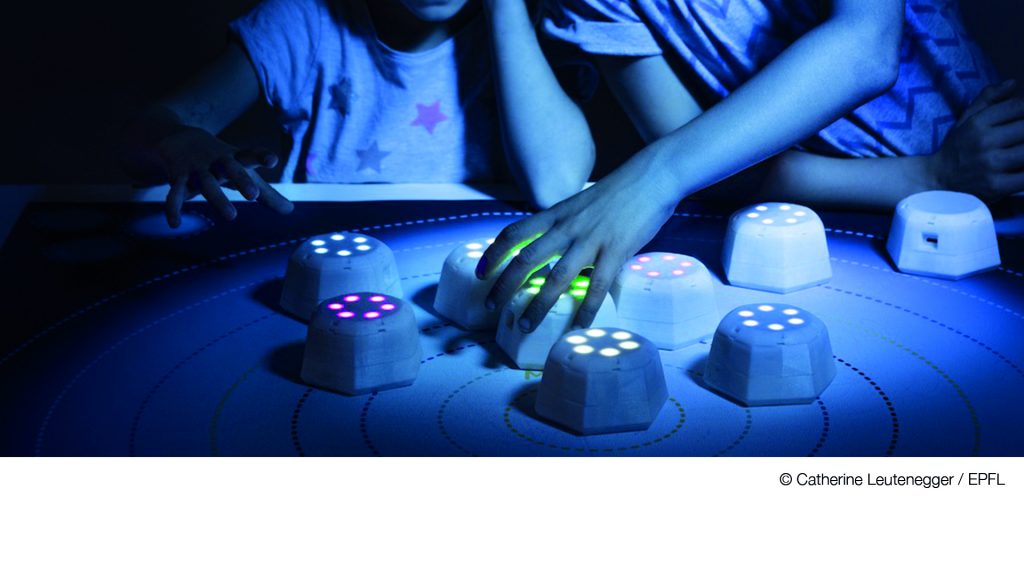This project brings together two lines of research – human swarm interaction and the use of swarms as a powerful way into education and learning.
A swarm is the coherent behavior that emerges from simple interaction rules between self-organized agents. Many examples can be found in biological systems from the microscopic (atoms and cells) to larger-scale aggregates of ants, bees, fish and birds. Ubiquitous in nature, the swarming behavior has inspired a wide range of research domains as diverse as biology, chemistry, robotics, nanotechnology, sociology and even interactive interfaces.
This fundamental concept of “everywhereness” paves the way into opening new educational perspectives with swarm systems, suggesting that using robot swarms as an educational tool can have a tremendous potential.
Stemming from the above idea, this project attempts to shed light on the novel aspect of human learning with tangible swarms, specifically envisioning the development of a swarm platform that is versatile in educational scenarios. This platform will introduce a play-based learning environment to learn complex systems. Following an agent-based modeling, learners will be able to explore the connection between micro-level behavior of individuals and the macro-level emergent patterns from their interactions. The final goal of this project will be to investigate new forms of interactions between learners and tangible swarms and to study the learning outcomes enabled by these interactions.

Please note that the publication lists from Infoscience integrated into the EPFL website, lab or people pages are frozen following the launch of the new version of platform. The owners of these pages are invited to recreate their publication list from Infoscience. For any assistance, please consult the Infoscience help or contact support.